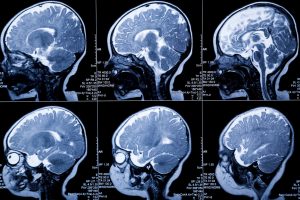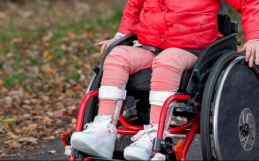Babies Head Shape: What To Know And When To Worry
Being on the lookout for health issues in your infant is all part and parcel of parenting, but it’s challenging to know what normal child development looks like without worrying too much.
If you suspect your baby has an uneven head shape, you’ll want to know as early as possible whether or not it’s a serious condition that requires further attention.
In this blog, we take a look at what constitutes a standard infant head shape versus an abnormal one and what your options are if your baby needs medical intervention for any skull deformities.
When do Cranial Deformities happen?
Baby’s heads are soft at birth and not fully formed until around eighteen months old. Cranial deformities typically show up in the window of approximately three months to one and a half years old.
Baby’s heads come in all shapes and sizes, and things like soft spots are often simply due to a skull that is still in the process of developing.
More often than not, what worries you one day will be resolved entirely the next – but it’s worthwhile to have a basic understanding of some of the possible causes of cranial abnormalities.
 Factors that Affect Skull Development?
Factors that Affect Skull Development?
If your baby’s head shape is concerning you, there are several factors that affect skull development:
- Your infant spending too much time lying on its back is a leading cause of babies’ heads becoming flattened (brachycephaly). It’s one of the reasons why pediatricians recommend introducing “tummy time” as early as possible and encourage parents to try out different head positions from a young age.
- Premature birth is also a leading contributor to a flattened back or side of the head (plagiocephaly) because a younger baby has a softer head which is more prone to becoming misshapen.
- Narrow space in the womb is another common cause of uneven heads in babies.
If the growth of your child’s head is restricted during pregnancy, this may affect skull development outside the womb as the baby grows.
- Craniosynostosis is a congenital condition where a baby’s skull plates fuse prematurely, leading to an unusual head shape as the brain continues to grow and push against the skull.
 Spotting Early Signs Of A Misshapen Baby Head
Spotting Early Signs Of A Misshapen Baby Head
Early detection increases the chances of successful outcomes with non-invasive treatment, so keep an eye out for these telltale signs of cranial abnormalities:
- When you hold your baby, check for a flattened area at the back or back corner of the head.
- If you see your baby has tight neck muscles or is struggling to move its head to one side, this could also be an indicator of a flattened skull.
- Facial imbalance where the eyes or ears are not symmetrically positioned
Feeling for irregularities in your baby’s head shape is also useful if you’re not certain whether what you’re looking at is normal skull development or a deformity.
So What Is A Normal Infant Head Shape?
If you’ve looked online and are still unclear on whether the shape of your infant’s head is cause for concern, it may be time to ask for professional help.
While a “normal” head shape can be challenging to pin down, at Applied Biomechanics, we offer a non-invasive 3D optical head scan that is cross-compared against norms for your child’s age and sex. This gives you peace of mind before considering any course of action for your child.
Expertise From Guelph’s Cranial Helmet Clinic
Get the answers you’re looking for from a licensed professional. Contact our team today to get your objective diagnosis and, if necessary, a custom-built helmet that will ensure proper development for your child.

 Factors that Affect Skull Development?
Factors that Affect Skull Development? Spotting Early Signs Of A Misshapen Baby Head
Spotting Early Signs Of A Misshapen Baby Head




